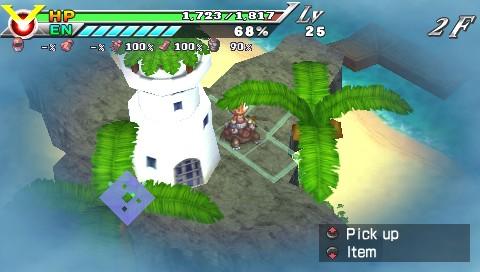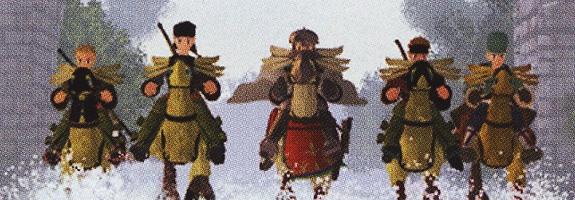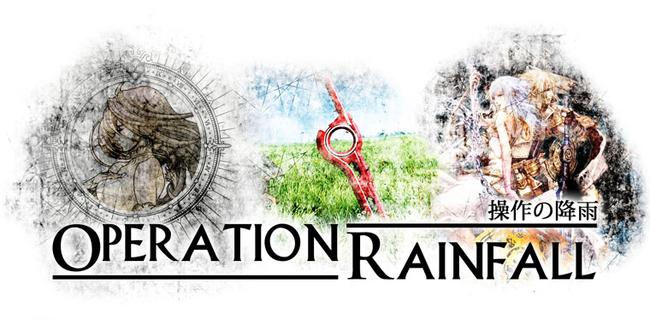
E3 2011: The Elder Scrolls V: Skyrim Impressions
Let me start this article with a little bit of a preface: I bought Elder Scrolls IV: Oblivion the same day it was launched. Two weeks later, I grew quite weary of the game and quickly dumped it at my local GameStop. The game had a certain charm to it, but I felt simply bored of romping through the dozens of carbon copy dungeons and tedious, if not rather sluggish combat mechanics. I walked into a closed door meeting to check out the next entry into the series, Skyrim, hoping for something, anything, to recapture my interest after spending so much time with Morrowind only to be disappointed with Oblivion.
Lead game designer Todd Howard explained to those of us gathered together in the dark room that Skyrim was of course being developed by the same team behind Morrowind, Oblivion, and Fallout 3, and that they came out of the completion of Fallout 3 with a laundry list of features that they wanted their next game to have. First off, they wanted to completely rewrite everything that they were going to work with, utilizing brand new technology for the consoles that culminated in the creation of a brand new engine to power their future games in what they nicknamed the Creation Engine.
The demo showed to us took place shortly after players had created their character, bringing them quickly into the open land of Skyrim, the northernmost continent in the world of Tamriel. What they were really aiming for in the design process of the game was a real attention to detail.

As Todd Howard put it, their team kept talking about how it was "nice to finally go back to green". Vegetation looks alive, filled with remarkable beauty that changes based on the landscape players found themselves in (plants can be harvested, too, by the way, just like in the other Elder Scrolls games). The size of the game world itself is absolutely enormous; everywhere you looked was a place that you could explore, with content being stream loaded straight off the disk so that there aren't any breaks in the action.
Quickly jumping into third-person view, the animation is way more natural than it has ever been. No longer does one's character look janky and suffering from rigor mortis. Instead, it appears to actually be a practical alternative with fluid movement through the different terrain.
The combat is the same as before, with the right trigger allowing you to attack and the left to guard if you are carrying a sword and shield in their respective sides. However, a great addition is the ability to map magical spells to your hands as well. For example, players can have a fire spell controlled by their right hand, and a healing spell mapped to their left. Using the same spell in both hands and then hitting both triggers together creates a more powerful spell. This also works for things like dual-wielding one-handed swords. Some spells can also be charged up to make them even more destructive.
Instead of a single way of levelling your character, everything has its own skill level, such as One-Handed Sword and Heavy Armor. Every time a player increases the experience points of one of these skills, their overall level also increases, and this happens automatically. This allows players to become whoever they want to be without having to make such a decision at the beginning of the game and then regretting it later.
Speaking of combat, a great addition is the ability to bookmark a set number skills, items, and equipment that can be selected at any time by hitting a button that opens up a scroll window. This is great for when combat can get pretty hot and heavy and you need that potion or you need that spell that will bind your opponent as you make your escape.
Using the B button to pull up the main menu, Todd showed off the intriguing User Interface that utilizes the look of panels, with white text on a slightly translucent window. Everything looked really clean and rather stunning in its subtlety. First off, we got to take a look at the Item menu. Thousands of items have been rendered for the game, each coming with their own 3D render and description. The food players will find can also be cooked to increase their effects, such as their healing properties. There are also over 300 different books for players to read and become enveloped with the world and its characters.

Skills are laid out as constellations, and every skill has their own Perk Tree that allows certain properties of that skill to increase based on the path players follow. Taking a look at the Map, we really got a sense of just how gigantic Skyrim really is; thankfully, one can still fast travel anywhere that they were previously so as to avoid the unnecessary trek if they don't feel like taking the walk.
Soon, the character reached the town of Riverwood, one of the first inhabited locations in the game. Quickly, one got the sense of just how vibrant each town really is. As is sort of the norm in an epic RPG, each villager has their own daily schedules that they stick to unless impeded upon.
Everyone has a job to do in order to support their local economy. If the player so chooses, they can tackle pretty much any job that the town has to offer, such as chopping wood, gather resources, or work in a shop. Of course, if they so desired, they can also sabotage any link in the chain or destroy the entire town itself and completely disrupt its economy. Taverns, as always are a great source of rumors and quests. Dialogue between the player and their target is done in real-time, so there is no stoppage in the game.
After jumping on a horse and showing the amazing level of detail that went into animating the creature, Todd Howard made his way to the top of a nearby mountain. He talked about how the quests you go on are dynamic in nature, in that they change based on what you have and haven't done or lately or if you have already visited the location you are going to - if you are tasked to wipe out a group of bandits and have done so already, the quest is completed right away. As he neared the mountain's crest, Todd explained that the weather that we were seeing, in this case snow, and was dynamically generated based on the terrain or cycle of the world - you won't find a bunch of white textures here.
Now, the overall design of the players themselves is that they are Dragonborn, and have inherited the use of Shouts or special abilities that utilizes the power of the language of dragons to decimate opponents or protect oneself from dangerous encounters. The idea is that when dragons use something like fire breath, they are actually communicating in the same way humans do.
As players defeat one of the hundreds of different dragons in the world, all unscripted who have their own agendas, the player absorbs the very soul of the dragon which unlocks the power of a word that the player discovers during their quests. Finding three words that fit a recipe creates a Shout.

After escaping the wrath of one of these dragons at the top of the mountain, Todd quickly ducks into a dungeon, one of over 150 that have been hand-crafted by the developers to ensure that no two dungeons are exactly the same. After killing a typically huge spider, he looted the venom off its body, explaining that you can use the venom to lace your weapons with poison to make them far more effective in combat. Killing and looting certain characters may also help the player discover journals that may contain clues for a quest you are on or one that you can partake in.
In the midst of combat, Todd showed three different Shouts that the players can use. One allows the character to sprint quickly ahead, another to slow time down to a fraction, and another blasts enemies far away. Inside the dungeons, there will be many puzzles to complete, each ranging in their difficulty level. In this case, a combination of sliding pictures could be completed by simply looking at the key that the player looted off a thief that was saved in one of the earlier tunnels of the dungeon.
After learning a word taken from a Word Wall found at the end of the dungeon, a nearby door took the player back outside where we were greeted by a travelling band of Giants and Mammoths. Now, these creatures are seen as entities of the world much like humans are, and will leave the player well enough alone unless bothered. Using the utmost of his strategic prowess, Todd quickly proclaimed that he would love to use that big axe he just picked up to decapitate these guys. Amazingly, in the midst of battle with one of the giants, a Frost Dragon came from out of nowhere, swooping down and picking up one of the giants by the skull and dropping them from 200 feet in the air.
As soon as the deed was done, it quickly turned on Todd, nose diving right in front of him and blasting his body with a rush of icy breath. After scrambling up a watchtower while guards proceed to shoot the dragon with arrows (and in which one of the guards unfortunately gets his head bitten off by the dragon), Todd used a Shout named Whirlwind Torce, which called upon a furious thunderstorm to destroy the dragon.
After a lightning strike damages one of the wings of the dragon, it quickly had to either make a smooth landing or straight up crash into the ground and hope it doesn't take too much damage. Sadly, it couldn't handle Todd's overpowered character and it was quickly dispatched of, which ended the demo.
All in all, Skyrim so far is definitely Game of Show in many respects. It looks to be the best looking RPG to ever hit the industry, with a colossal amount of content for players to enjoy and a downright ingenious combat system. The dragons are graceful in their deadliness, and best of all, the dungeons look incredible and not completely lousy like in Oblivion. I simply can't wait to get my hands on Skyrim when it comes out this November, and fans of the genre would be doing themselves a grand favour by opening their minds and their wallets to reward the expert craftsmanship by the developers at Bethesda.